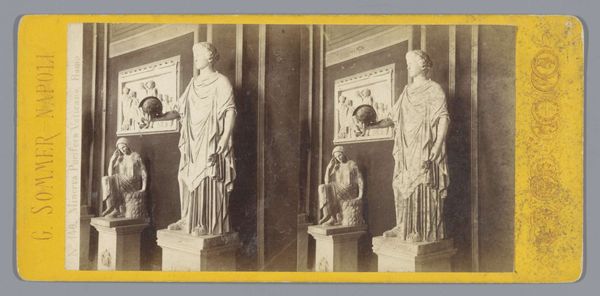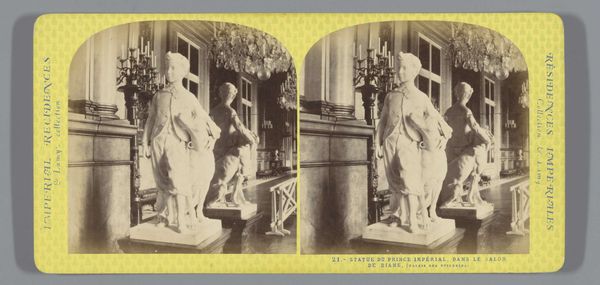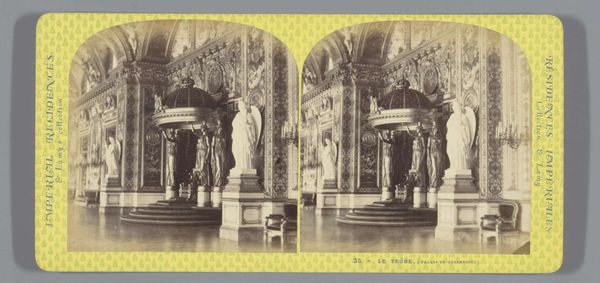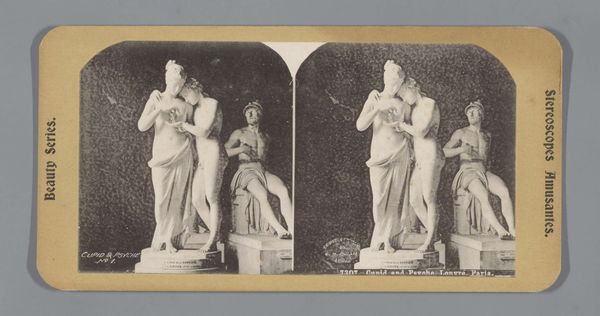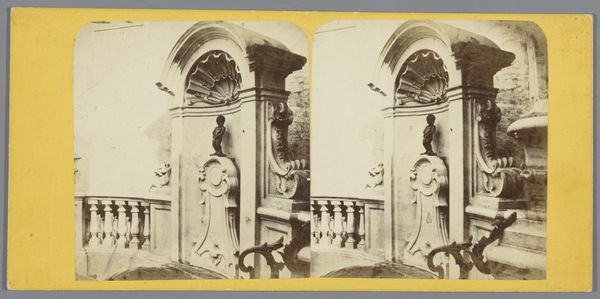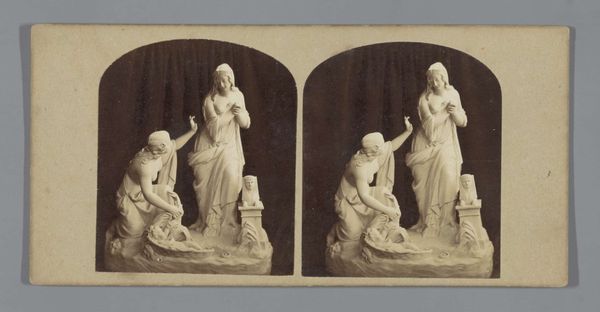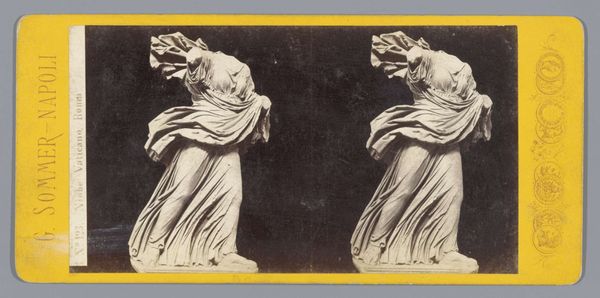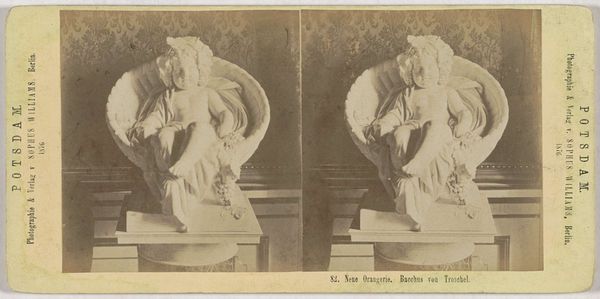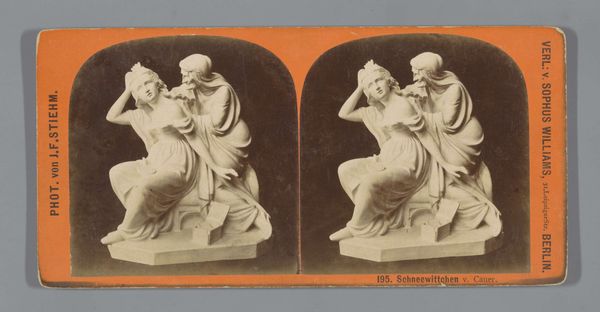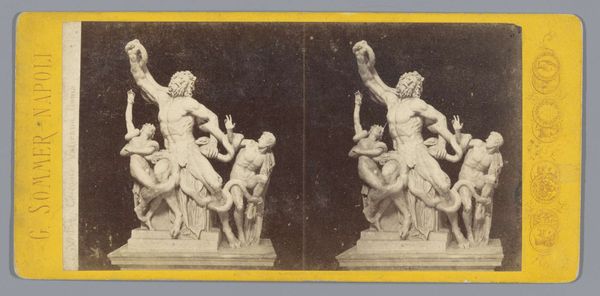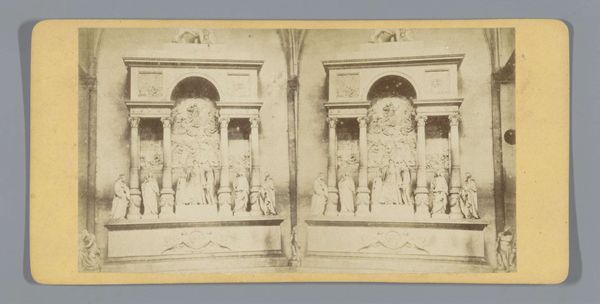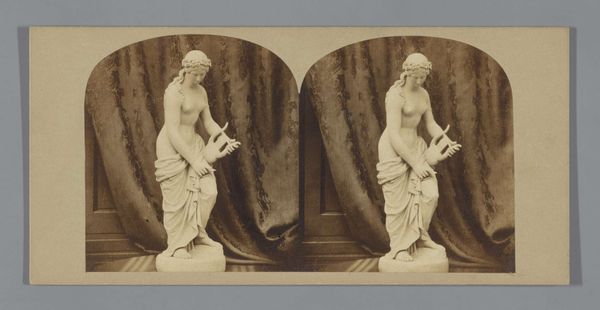
Sculptuur van een slapende Ariadne in de Vaticaanse Musea c. 1860 - 1880
0:00
0:00
print, photography, sculpture, gelatin-silver-print
#
portrait
# print
#
photography
#
ancient-mediterranean
#
sculpture
#
gelatin-silver-print
Dimensions: height 84 mm, width 176 mm
Copyright: Rijks Museum: Open Domain
Curator: Immediately striking, isn’t it? The languid pose, the visible weight of the stone... a portrait steeped in classical ideals. Editor: Indeed. We're looking at "Sculptuur van een slapende Ariadne in de Vaticaanse Musea," a gelatin-silver print made by Giorgio Sommer sometime between 1860 and 1880, currently held at the Rijksmuseum. What is particularly compelling about this image for you? Curator: The composition—the diagonal sweep of Ariadne’s reclining form against the sharp verticals of the columns. And the light; notice how Sommer captures the textures, particularly on the frieze beneath. It lends depth, solidity. Editor: Yes, Sommer's photograph became another means for circulating and displaying the fame of this work. Remember, images like this catered to the booming tourist industry and expanding middle class interested in accessing High Culture. How interesting that even replicas become objects of desire! Curator: Quite. And in purely formal terms, the choice of that soft, gelatin silver provides such a contrast to the hard marble. This creates an interesting interplay of texture. Almost as if trying to soften something inherently rigid. Editor: Absolutely. There’s a narrative at play. Ariadne abandoned by Theseus, but discovered by Dionysus and elevated to godhood. Photographs like this one are rarely about singular genius, but a broader cultural history, its dissemination, and consumption by diverse audiences, reflecting broader colonial patterns in Europe at the time. Curator: True, and perhaps Sommer subtly acknowledges this in his deliberate framing, setting Ariadne against this almost bare background. Focusing our attention not so much on context, as you've suggested, but form. The folds of the drapery, the curve of her arm—pure design. Editor: The choice to highlight Ariadne speaks volumes to 19th-century audiences—themes of female abandonment, but also the promise of divine salvation through love, all become implicated in debates about morality, history, and photography itself. Curator: Very interesting when you think of photography as an objective witness. A mirror held to cultural values as well as, obviously, marble! Thank you. Editor: An evocative conversation. A testament to how seemingly static images actively shape histories.
Comments
No comments
Be the first to comment and join the conversation on the ultimate creative platform.
